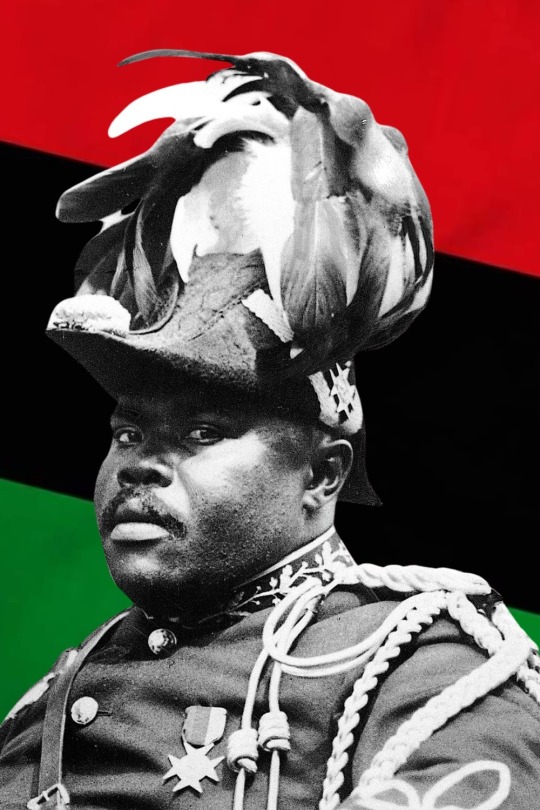#Reliance Industries Share
Explore tagged Tumblr posts
Text
Are you looking to make informed decisions about your stock portfolio? If you're interested in understanding how stocks like Reliance Power, PC Jewellers, Zydus Life, and others are performing, you're in the right place! In this article, we will explore the latest updates on these stocks, as well as highlight some exciting multibagger penny stocks that could yield high returns. Whether you are a seasoned investor or a newcomer, this guide will provide you with all the insights you need to navigate these investments with confidence.
#reliance power share price#pc jewellers share price#multibagger penny stocks#acme solar share price#zydus life share price#page industries share price#aarti industries share price#stock market#stocks stocks to watch#stock to invest
0 notes
Text
Reliance Industries Share Price, Insights and Trends
Reliance Industries has expanded its presence across diverse sectors, such as telecommunications, retail, energy, and technology. Its stock price often reflects broader market trends, economic changes, and industry innovations. Here is a closer look at Reliance Industries' share price.
#reliance industries share price#reliance shares#relianceindustries#stockedge#stock trading#sector stock analysis#stock market#stocks analysis#stock analysis app
0 notes
Text
The Greetings Group troubles involved lending to a company that may have been over-reliant on the tourism industry, and the problems with Westmex related to Westpac's lending against the security of shares in a bull market.
"Westpac: The Bank That Broke the Bank" - Edna Carew
#book quote#westpac#edna carew#nonfiction#greetings group#money troubles#lending#finance#banking#reliance#tourism industry#westmex#shares
1 note
·
View note
Text
Understanding the Dynamics: The Difference in Share Prices of Reliance and Hindalco Industries
When it comes to making financial judgments in the turbulent world of stock markets, where trends and fortunes shift by the second, investors look for reliable sources of guidance. If you are looking for someone to guide the way, follow StockGro. According to our experts, Reliance Industries and Hindalco Industries are now the two most prominent possibilities among the many others. Through this in-depth examination, we want to illuminate the complexities surrounding their shared values, comprehend the variables affecting their oscillations, and investigate the basic dynamics that define their courses.
Chasing the Innovation Waves: Reliance Industries' Share Price
Reliance Industries is a large Indian organization known for its broad commercial operations and strategic approach. Dhirubhai Ambani began Reliance in 1966 as a textile company, and it has since expanded into a conglomerate with activities in energy, petrochemicals, retail, and digital services.
The secret to Reliance's success is its ability to adapt to changing market conditions and its relentless pursuit of innovation. The stock price of a company reflects its financial performance, strategic goals, technological innovations, and market perception.
Reliance's share price has changed dramatically in recent years due to a multitude of reasons, including:
Reliance Jio's Disruption: The debut of Reliance Jio Infocomm in 2016 upset the telecommunications business by introducing low-cost data plans and igniting a pricing war among competitors. This decision boosted Reliance's share price to new highs, demonstrating investor confidence in the company's digital development prospects.
Expansion into Retail: Reliance's entry into the retail industry through Reliance Retail has also been a significant driver of the company's share price. The company's rapid expansion, strategic acquisitions, and creative retail formats have boosted investor confidence and contributed to the rise in its share price.
Investment in Green Energy: Reliance's recent emphasis on renewable energy and sustainable practices has resonated with investors, fueling optimism about the company's long-term development prospects. The company's disclosure of ambitious intentions to become net carbon neutral by 2035 piqued investor attention and boosted its share price.
As Reliance continues to innovate, diversify, and expand its footprint, Reliance Industries Share Price remains a reflection of investor sentiment, market trends, and the company's strategic direction.
Hindalco Industries Share Price: Navigating the Metals Market
Hindalco Industries, the Aditya Birla Group's flagship firm, is a global leader in the aluminum and copper industries, focusing on sustainability. Founded in 1958, Hindalco has a solid reputation for providing high-quality goods, pushing innovation, and cultivating long-term relationships with clients around the world.
Hindalco Industries' share price is influenced by several factors peculiar to the metals industry, including:
Commodity Prices: Hindalco's share price is highly tied to commodity price swings, as the company produces aluminum and copper. Changes in global demand-supply dynamics, geopolitical concerns, and macroeconomic trends can all impact aluminum and copper prices and, thus, Hindalco Industries Share Price.
Operational Performance: Hindalco's operational performance, such as production volumes, cost efficiency, and capacity utilization rates, has a direct impact on the company's financial success and, as a result, share price. Investors regularly watch important operational parameters to assess the company's growth potential and profitability.
Global Economic Conditions: Hindalco's stock price is also influenced by broader macroeconomic trends, including GDP growth, industrial activity, and infrastructure spending. Positive economic indications can increase demand for aluminum and copper, raising prices and, consequently, Hindalco's stock price.
Hindalco has recently launched strategic measures to improve operational efficiency, diversify its product portfolio, and boost its presence in important markets. These measures have positioned the company for long-term growth and helped to keep its share price stable in the face of market volatility.
Comparative Analysis: Reliance vs. Hindalco Share Prices
While Reliance Industries and Hindalco Industries operate in separate industries and confront distinct market dynamics, there are significant similarities in the variables impacting their share prices:
Investors Role: Investor sentiment, market movements, and macroeconomic factors all have an impact on overall market sentiment, which affects both Reliance and Hindalco.
Business success: Both firms' financial success, including revenue growth, profitability, and earnings per share, has a significant impact on their share prices.
Strategic Initiatives: Investor perceptions of a company's strategic initiatives, such as expansion plans, diversification efforts, and sustainability initiatives, can influence its share price.
While Reliance Industries Share Price and Hindalco Industries Share Price may diverge at times, their long-term performance indicates their capacity to adapt to changing market conditions, capitalize on growth opportunities, and create value for shareholders.
Conclusion
To summarize, various industry-specific factors, market dynamics, and strategic objectives influence Reliance Industries and Hindalco Industries' share prices. Reliance's share price reflects investor confidence in its diverse business strategy, technical developments, and expansion into new areas. In contrast, Hindalco's share price is driven by commodity pricing, operational performance, and global economic conditions.As investors traverse the complexity of the stock market, knowing the fundamental dynamics driving Reliance and Hindalco share prices is critical for making sound investing decisions. While previous performance does not guarantee future outcomes, a detailed examination of these variables can assist investors in determining the development prospects and investment potential of these two industrial behemoths. StockGro will constantly bring such analysis for its readers to help them make sound decisions.
0 notes
Text
Latest News and Updates on Reliance Industries Limited (RELIANCE) | Ticker.finology
Stay up-to-date with the latest news, updates, and financial results of Reliance Industries Limited (RELIANCE) on Ticker.finology. From quarterly results to new energy giga complexes, our website provides comprehensive coverage of the Indian conglomerate.
#Reliance Industries Ltd. Share Price#NSE Reliance Industries Ltd.#Reliance Industries Ltd. Stock Price#Reliance Industries Ltd. Price Chart#Reliance Industries Ltd. Share News#Reliance Industries Ltd. Balance Sheet
0 notes
Text
Mastering the Share Market: A Comprehensive Basic Guide for Share Market Beginners
Introduction: The Indian share market is a dynamic landscape offering abundant opportunities for investors. This blog aims to demystify the complexities of the market, empowering readers with insights and strategies for informed decision-making. Section 1: Understanding the Share Market 1. What is the Share Market? The share market, also known as the stock market, is a platform where the buying,…

View On WordPress
#How to invest in the stock market#infosys company share price#national stock exchange#nse national stock exchange#punjab national bank stock price#rate of share of reliance industries#reliance industries stock price#sensex index today#sensex sensex today#sensex today#share market basics#share market news#share price punjab national bank#state bank of india stock price#stock market analysis#stock market for beginners#Stock market investing strategies#Stock market trends in India#tatasteel share price today#Tips for investing in the stock market#todays sensex
0 notes
Text
RIL Shares Jump Near 4 Per Cent, Market Valuation Climbs Rs 67,326 Crore
The stock rallied 3.78 per cent to settle at Rs 2,735.15 on the BSE. Mumbai: Shares of Reliance Industries Limited on Monday jumped nearly 4 per cent, with its market valuation rallying by Rs 67,326 crore. The stock rallied 3.78 per cent to settle at Rs 2,735.15 on the BSE. During the day, the index heavyweight stock jumped 4.53 per cent to hit its 52-week high of Rs 2,755. At the NSE, it…

View On WordPress
0 notes
Text
He’s a f—king madman who has no idea what he’s doing or what kind of harm he’s going to cause. Coffee prices will soar and it won’t’t just be Columbian coffee because it will create a greater demand for coffee from other nations. Then you can expect all the importers and retailers to price gouge on top of that. Pressed flowers will become unaffordable as well. Then gas prices will rise because their cheap crude oil will suddenly cost 25% more and again everyone else in the business will see increased demand and raise their prices and price gouge on top of that. Worse, he’s threatening to Jack the tariffs up to 50% for countries that won’t now to his demands.
Tariffs are meant to be used sparingly to stimulate domestic industry instead of relying on foreign producers. They were never intended to be used across the board on every item from a country. The foreign producers aren’t going to absorb a 25% loss in revenue, that’s never happened and likely never will. Prices for American consumers will rise by 25% plus inconvenience fees and price gouging.
Tariffs aren’t a weapon if you think they are you’re just shooting your own citizens in the foot. This is pretty basic stuff. Most people learned this when studying early American history in elementary school. American leaders in the post-revolutionary years imposed tariffs on European manufactured goods such as tools, guns, furniture, machines, etc to end reliance on imported goods while stimulating American manufacturing and turning us into an exporting nation.
Trump’s sole college degree is a bachelor’s in economics. This dumb ass should know how this works. He the densest mother f—ker alive and is completely incapable of being taught anything. Further he’s suffering cognitive decline due to mental illness and is a raging drug addict on top of that. Coke as an upper and Adderall to come down. His shadow president, Elon Musk, ironically only has a bachelor’s degree as well and surprise it’s also in economics. He should know better but also is suffering from mental illness and the consumption of mass quantities of Ketamine. Two moronic drug addicts.
The Republicants who should be advising Trump aren’t the best and brightest either. Nearly all of them haven’t gone beyond a bachelor’s degree and they certainly didn’t major in anything that would be useful in managing a large country with the largest economy on the planet. They are trying to run a government based on sound bites and talking points they picked up from the uneducated hosts of Fox News and Fox Business.
Once countries get burned by Trump’s tariffs they will seek out trading partners in Russia, Asia, the Middle East, and Africa. Once a trading partner leaves they almost never return. We’ll be forced to seek out more expensive trading partners who will be very cautious dealing with an unreliable USA. Further Columbia will stop cooperating and sharing intelligence in the war against the narco terrorists. Politically all these nations Trump alienates will realign their political goals with BRICS which is growing as an alternative trade and policy for nations not aligned with the Western and first world states. This is an economic and foreign policy disaster that will ripple through the world for decades to come. Trump isn’t just going to crash our economy but likely cause a worldwide depression, or at least recession. When the US catches a cold the rest of the world sneezes.
THIS IS NOT NORMAL AND ITS NOT EVEN RATIONAL.
#trump doesn’t understand tariffs#Trump’s advisers are not intelligent or well educated and certainly are not competent#tariffs are not tools#nobody wins a trade war#an unsuccessful NYC realtor is not qualified to be president#this is self destructive#the US and world economies will suffer#republican assholes#maga morons#traitor trump#crooked donald#traitor#resist#republican values#republican hypocrisy#republican family values
96 notes
·
View notes
Text

Why Black People Aren't Taken Seriously Globally: A Garveyite Perspective
Marcus Garvey’s teachings offer a powerful lens for understanding why Black people globally face challenges in being taken seriously or respected. His philosophy of Black nationalism and Pan-Africanism highlights systemic, cultural, and internal factors that have contributed to this struggle. Let’s break it down:
1. Lack of Unity: Garvey said it best: "A divided people are easily dominated." Without unity—whether due to tribalism, classism, or national divisions—the global Black community struggles to assert collective power.
2. Economic Dependency: Garvey emphasized that respect comes with economic independence. Black communities’ reliance on foreign systems and industries perpetuates cycles of exploitation and disrespect.
3. Colonial and Mental Enslavement: Centuries of slavery and colonialism didn’t just take land—they took minds. Many Black people still internalize inferiority, adopting Western standards over their own heritage.
4. Political Powerlessness: Without strong political sovereignty, Black nations and communities often end up subject to the whims of external powers. Garvey’s solution? "Africa for the Africans!"
5. Cultural Alienation: The erasure of African traditions through colonization leaves many disconnected from their roots. Reclaiming cultural pride is essential to earning global respect.
6. Scattered Identity: Black people globally lack a unified identity or voice. Garvey’s dream of Pan-Africanism sought to unite Africans and the diaspora under one banner.
7. Over-Reliance on Non-Black Leadership: Garvey criticized dependence on external leaders, emphasizing the need for Black-led solutions.
8. Propaganda and Negative Perceptions: Global media often perpetuates harmful stereotypes about Black people. Controlling our own narratives is key to countering this.
9. Weak Institutions: Without Black-owned banks, schools, or hospitals, dependence on external systems undermines the community’s autonomy.
10. Internal Resistance to Progress: Garvey noted that some resist self-improvement due to fear, ignorance, or complacency. This, he believed, holds the community back.
11. Western Cultural Dominance: The dominance of Western values marginalizes African contributions. Assimilating into these systems often comes at the expense of Black identity.
12. Educational Shortcomings: Garvey championed education in African history and achievements. A lack of this fosters ignorance and self-doubt.
13. Reparations Neglect: Failing to demand reparations for slavery and colonialism signals a lack of seriousness in addressing historical grievances.
14. Charity Over Infrastructure: Many African nations rely on foreign aid instead of building infrastructure, creating a cycle of dependency.
15. Exploitation by Foreign Powers: Africa’s wealth is drained by foreign exploitation. Regaining control of resources would shift global power dynamics.
16. Assimilation into Eurocentric Ideologies: Rejecting African traditions in favour of Eurocentric systems weakens collective pride and fosters division.
17. Poor Leadership: Garvey stressed the need for visionary leaders who prioritize collective progress over personal gain.
18. Passivity in Oppression: Accepting injustice without resistance only reinforces oppression. Bold, decisive action is required.
19. Loss of Spiritual and Moral Foundation: Materialism and individualism have replaced communal values. Garvey believed spirituality was central to empowerment.
20. Fragmented Diaspora: A weak connection between Africa and its diaspora prevents global solidarity and shared progress.
21. Neocolonial Borders: Artificial colonial borders foster division and conflict, undermining unity and progress.
22. Lack of Strategic Alliances: Garvey urged the Black community to form alliances with other oppressed groups to amplify their influence.
23. Complacency and Fear: Fear of change and comfort with familiar oppression prevent the risks necessary for progress.
24. Neglect of Garvey’s Vision: Without institutionalizing Garvey’s principles, the movement for unity, self-reliance, and African pride remains fragmented.
So What’s the solution?
The Honourable Marcus Garvey’s answer was clear: Unity, Economic independence, Reclaiming African identity and Building global solidarity.
The road to respect lies in pride, self-reliance, and unwavering determination. His vision remains a blueprint for global Black empowerment.
“If you have no confidence in self, you are twice defeated in the race of life.” – The Honourable Marcus Garvey
#black people#black#black history#black tumblr#blacktumblr#pan africanism#black conscious#africa#black power#black empowering#Garveyite#garveyism#marcus garvey#african diaspora#black diaspora#black community#black freedom#black liberation#black unity#black excellence#blog
121 notes
·
View notes
Text
The American oligarchy is back, and it’s out of control
It’s the third time in the nation’s history that a small group of hyper-wealthy people have gained political power over the rest of us. Here’s what we must do.
ROBERT REICH
DEC 20

Friends,
Today we don’t know if the United States government will shut down tomorrow because, first, Elon Musk followed by his co-president Donald Trump, persuaded House Republicans to vote against a compromise bill, and then, last night, Republicans couldn’t summon enough votes for a stripped-down continuing resolution because Trump insisted that it contain a measure lifting the debt ceiling.
This is not governing. Trump and the Republicans are not a governing party.
What’s the back story to all this? It’s the oligarchy that put Trump into the presidency.
A half-century ago, when America had a large and growing middle class, those on the “left” wanted stronger social safety nets and more public investment in schools, roads, and research. Those on the “right” sought greater reliance on the free market.
But as power and wealth have moved to the top, everyone else — whether on the old right or the old left — has become disempowered and less secure.
Today the great divide is not between left and right. It’s between democracy and oligarchy.
The word “oligarchy” comes from the Greek words meaning rule (arche) by the few (oligos). It refers to a government of and by a few exceedingly rich people or families who control the major institutions of society — and therefore have most power over other peoples’ lives.
So far, Trump has picked 13 billionaires for his administration. It’s the wealthiest in history, including the richest person in the world. They and Trump are part of the American oligarchy, even though Trump campaigned on being the “voice” of the working class.
America’s two previous oligarchies
America has experienced oligarchy twice before. Many of the men who founded America were slaveholding white oligarchs. At that time, the new nation did not have much of a middle class. Most white people were farmers, indentured servants, farm hands, traders, day laborers, and artisans. A fifth of the American population was Black, almost all of them enslaved.
A century later a new American oligarchy emerged comprised of men who amassed fortunes through their railroad, steel, oil, and financial empires — men such as J. Pierpont Morgan, John D. Rockefeller, Andrew Carnegie, Cornelius Vanderbilt, and Andrew Mellon. It was called the Gilded Age.
They ushered the nation into an industrial revolution that vastly expanded economic output. But they also corrupted government, brutally suppressed wages, generated unprecedented levels of inequality and urban poverty, pillaged rivals, shut down competitors, and made out like bandits — which is why they earned the sobriquet “robber barons.”
World War I and the Great Depression of the 1930s eroded most of the robber barons’ wealth, and much of their power was eliminated with the elections of Franklin D. Roosevelt in 1932 and Democratic majorities in the House and Senate.
America demanded fundamental reforms — a progressive income tax, corporate taxes, estate taxes, limits on the political power of large corporations, antitrust laws, laws enabling workers to form unions and requiring that employers negotiate with them, Social Security, the forty-hour workweek, unemployment insurance, civil rights and voting rights, and Medicare.
For the next half-century, the gains from growth were more widely shared and democracy became more responsive to the needs and aspirations of average Americans. During these years America created the largest middle class the world had ever seen.
There was still much to do: wider economic opportunities for Black people, Latinos, and women, protection of the environment. Yet by almost every measure the nation was making progress.
America’s current oligarchy
Starting around 1980, a third American oligarchy emerged.
Since then, the median wage of the bottom 90 percent has stagnated. The share of the nation’s wealth owned by the richest 400 Americans has quadrupled (from less than 1 percent to 3.5 percent) while the share owned by the entire bottom half of America has dropped to 1.3 percent, according to an analysis by my Berkeley colleagues Emmanuel Saez and Gabriel Zucman.
The richest 1 percent of Americans now has more wealth than the bottom 90 percent combined.
The only other country with similarly high levels of wealth concentration is Russia, another oligarchy.
All this has been accompanied by a dramatic increase in the political power of the super-wealthy and an equally dramatic decline in the political influence of everyone else.
While the Biden administration sought to realign America with its ideals, it did not and could not accomplish nearly enough. Trump’s lies and demagoguery exploited the anger and frustration of much of America — creating the false impression he was a tribune of the working class and an anti-establishment hero — thereby allowing the oligarchy to triumph.
In 2022, Elon Musk spent $44 billion to buy Twitter and turn it into his own personal political megaphone. Then, in 2024, he spent $277 million to get Trump elected, also using Twitter (now X) to amplify pro-Trump, anti-Harris messages.
These were good investments for Musk. Since Election Day, Musk’s fortune has increased by $170 billion. That’s because investors in Tesla and SpaceX have pushed their value into the stratosphere.
Trump has put Musk (and another billionaire, Vivek Ramaswamy) in charge of gutting government services in the name of “efficiency.” Musk’s investors assume that Musk will eliminate the health, safety, labor, and environmental regulations that have limited the profits of Musk-owned corporations, and that Trump will put more government money into SpaceX and xAI (Musk’s artificial intelligence company).
Unlike income or wealth, power is a zero-sum game. The more of it at the top, the less of it anywhere else.
The power shift across America is related to a tsunami of big money into politics. Corporate lobbying has soared. The voices of average people have been drowned out.
The American oligarchy is back, with a vengeance.
Not all wealthy people are culpable, of course. The abuse is occurring at the nexus of wealth and power, where those with great wealth use it to gain power and then utilize that power to accumulate more wealth. Today’s robber barons include Elon Musk, Jeff Bezos, Peter Thiel, David Sacks, Charles Koch, Jeff Yass, Ken Griffin, and Rupert Murdoch.
What the new oligarchy wants
This is how oligarchy destroys democracy. As oligarchs fill the coffers of political candidates and deploy platoons of lobbyists and public relations flaks, they buy off democracy. Oligarchs know that politicians won’t bite the hands that feed them.
As long as they control the purse strings, there will be no meaningful response to the failure of most people’s paychecks to rise, nor to climate change, nor racism, nor the soaring costs of health insurance, pharmaceuticals, college, and housing, because those are not the main concerns of the oligarchy.
The oligarchs want lower taxes, which is what Trump, Musk, and other oligarchs are planning — an extension of the 2017 Trump tax cut, with an estimated price tag of at least $5 trillion.
They want no antitrust enforcement to puncture the power of their giant corporations. Instead, their corporations will grow larger, able to charge consumers even more. Trump is replacing Lina Khan, the trustbusting chair of the Federal Trade Commission, with a Trump crony.
There will be no meaningful constraint on Wall Street’s dangerous gambling addiction. The gambling will only increase.
Wall Street is already celebrating Trump’s victory. The stock market has reached new heights. But the stock market is inconsequential for most people, because the richest 1 percent own over half of all shares of stock owned by Americans while the richest 10 percent own over 90 percent.
There will be no limits to CEO pay. Wall Street hedge fund and private equity managers will also rake in billions more. Government will dole out even more corporate subsidies, bailouts, and loan guarantees while eliminating protections for consumers, workers, and the environment.
It will become a government for, of, and by the oligarchy.
The biggest divide in America today is not between “right” and “left,” or between Republicans and Democrats. It’s between democracy and oligarchy. The old labels — “right” and “left” — prevent most people from noticing they’re being shafted.
The propagandists and demagogues who protect the oligarchy stoke racial and ethnic resentments — describing human beings as illegal aliens, fueling hatred of immigrants, and spreading fears of communists and socialists.
This strategy gives the oligarchy freer rein: It distracts Americans from how the oligarchy is looting the nation, buying off politicians, and silencing critics. It causes Americans to hate each other so we don’t look upward and see where the wealth and power have really gone.
The necessary agenda
The way to overcome oligarchy is for the rest of us to join together and win America back, as we did in response to the oligarchy that dominated America’s last Gilded Age.
This will require a multiracial, multiethnic coalition of working-class, poor, and middle-class Americans fighting for democracy and against concentrated power and privilege.
It will require that the Democratic Party, or a new third party, tell the truth to the American people: that the major reason most peoples’ wages have gone nowhere and their jobs are less secure, why most families have to live paycheck to paycheck, why CEO pay has soared to 300 times the pay of the typical worker, and why billionaires are about to run our government, is because the market has been rigged against average working people by the oligarchy.
The agenda ahead is simply stated but it will not be easy to implement: We must get big money out of our politics. End corporate welfare and crony capitalism. Bust up monopolies. Stop voter suppression.
We must strengthen labor unions, give workers a stronger voice in their workplaces, create more employee-owned corporations, encourage worker cooperatives, fund and grow more state and local public banks, and develop other institutions of economic democracy.
This agenda is neither “right” nor “left.” It is the bedrock for everything else America must do.
It may seem an odd time in our history to suggest such reforms, but this is the best time. Trump and his oligarchy will inevitably overreach. The lesson from the last Gilded Age is that when the corruption and ensuing hardship become so blatant that they offend the values of the majority of Americans, the majority will rise up and demand real, systemic change.
It’s only a matter of time. A government shutdown that hurts average people, engineered by the richest person in the world, might just hasten it.
33 notes
·
View notes
Text





🎄💾🗓️ Day 7: Retrocomputing Advent Calendar - Altair 8800🎄💾🗓️
The Altair 8800 was one of the first commercially successful personal computers, introduced in 1975 by MITS, and also one of the most memorable devices in computing history. Powered by the Intel 8080 CPU, an 8-bit processor running at 2 MHz, and initially came with 256 bytes of RAM, expandable via its S-100 bus architecture. Users would mainly interact with the Altair through its front panel-mounted toggle switches for input and LEDs for output.
The Altair 8800 was popularized through a Popular Electronics magazine article, as a kit for hobbyists to build.
It was inexpensive and could be expanded, creating a following of enthusiasts that launched the personal computer market. Specifically, it motivated software development, such as Microsoft's first product, Altair BASIC.
The Altair moved from hobbyist kits to consumer-ready personal computers because of its modular design, reliance on the S-100 bus that eventually became an industry standard, and the rise of user groups like the Homebrew Computer Club.
Many of ya'll out there mentioned the Altair 8800, be sure to share your stories! And check out more history of the Altair on its Wikipedia page -
along with the National Museum of American History - Behring center -
Have first computer memories? Post’em up in the comments, or post yours on socialz’ and tag them #firstcomputer #retrocomputing – See you back here tomorrow!
#retrocomputing#altair8800#firstcomputer#electronics#vintagecomputing#computinghistory#8080processor#s100bus#microsoftbasic#homebrewcomputerclub#1975tech#personalcomputers#computerkits#ledswitches#technostalgia#oldschooltech#intel8080#computerscience#techenthusiasts#diycomputing#earlycomputers#computermemory#vintageelectronics#hobbycomputing#popularelectronics#techhistory#innovation#computermilestones#geekculture
45 notes
·
View notes
Text
This is hands-down, one of the most solid and well supported pieces I've read on substack in ages. The premise, by drag queen Kochina Rude, surrounds what community means in the present era of queer visibility, the state of politics, and the reliance on businesses as queer third-spaces. It's a SF specific lens, but I feel it rings true for a large swath of the US, and beyond, with frustration and fatigue surrounding language vs action, individualism, and everyone being broke. While I recommend you read the entire piece, here are a few meaningful excerpts.
The current nightlife business model can no longer support those tasked with creating the culture San Francisco is known for, and our workforce has been paying the price for years. (Ask any bartender or security guard how many jobs they have.) The abundant, cheap labor the nightlife industry relies on to sustain itself is no longer possible within city limits; workers have moved across the bay or out of the area just to make ends meet, even if San Francisco remains the center of their social world. The drag queen supply has also just straight up exceeded demand; not just locally, but on television, as indicated by former reality TV contestants reporting fewer opportunities and empty schedules. (I’ve given up on keeping track of these girls, and I work with them.) On top of that, we’re living through a period of inflation and income disparity in the most expensive region in America, and anyone with a stake in the entertainment industry would be hard-pressed to deny what we’re seeing with our own eyes and in our bank statements. To sum it up: we’re down bad, divas.
...
As a queer person, I no longer believe that identity politics will save us. Unity and hybridity (separate parts that comprise the whole; or, intersectionality) come to roost in affinity: a commonality of characteristics suggesting a relationship to shared interests, causes, or circumstances. On paper, I may have next to nothing in common with my heterosexual friends in tattoo shops or hardcore bands, but we possess a unified outlook on life based on shared experiences from our youth. In contrast, I find that I do not typically share affinity with most other gay people I meet at the gay club. (Ooh, she’s “different.”)
...
It’s true that I’m sick of talking about community. But I’m entering the new year with the understanding that sometimes we must take a step back and re-examine our relationships to things to remember why it’s worth doing. One must never forget that we—me, you, and everyone we know—are all worth it. A Jewish proverb attributed to Pirkei Avot from the early common era (first and second centuries, CE) states: “you are not obligated to finish the work, but neither are you free to desist from it.”
29 notes
·
View notes
Text
A world-building list. Enjoy! :)
1. Geography & Environment
What is the physical geography of the world: (continents, oceans, mountains)?
Are there any unusual natural phenomena or landmarks (e.g., floating islands, glowing forests)?
What is the climate like, and does it vary across regions?
How does the environment affect the lives and behaviors of the inhabitants?
Are there specific resources the world is known for?
What's the weather like?
2. Culture & Society
What are the main cultures or civilizations in the world?
How do people express their cultural identity (e.g., clothing, festivals, music)?
What are the major languages or dialects, and how do they influence communication?
What are the social hierarchies or class systems?
What role do gender roles, traditions, or taboos play?
3. Politics & Government
What are the dominant forms of governance (monarchies, democracies, councils)?
Who holds power, and how do they maintain it?
How are laws created and enforced?
Are there any significant political conflicts or alliances?
What role do religion or philosophy play in politics?
4. Religion & Beliefs
What are the dominant religions or belief systems?
How do they explain the creation of the world or existence?
Are there gods, spirits, or other supernatural entities worshipped?
What religious practices or rituals are common?
How do belief systems shape daily life, morality, and culture?
5. Economy & Trade
What is the primary currency or barter system?
What industries or trades dominate the economy?
How do people make a living?
What goods are exported or imported between regions?
Are there economic disparities or poverty?
6. Technology & Innovation
What level of technology does the world possess (medieval, steampunk, futuristic)?
Are there any unique inventions or discoveries?
How has technology shaped warfare, communication, or travel?
Is there a reliance on magic, science, or a mix of both?
Are there limitations or dangers associated with technology?
7. Magic & Mysticism
Does magic exist, and how is it accessed or controlled?
What are the rules or limitations of magic?
Are there magical creatures, artifacts, or phenomena?
Who can use magic, and is it regulated or feared?
How does magic influence politics, economy, or daily life?
8. History & Mythology
What are the major historical events or turning points?
Are there legendary heroes, villains, or mythical stories passed down?
How do different cultures interpret history or myth?
Are there ruins or relics of past civilizations?
What lessons or warnings do people derive from their history?
9. Inhabitants
What species or races inhabit the world?
How do different groups interact or coexist?
Are there unique traits, abilities, or traditions among species?
What challenges do they face in their environment?
How do they adapt or evolve over time?
10. Conflict & Change
What are the major sources of conflict (political, religious, resource-based)?
Are there ongoing wars or rebellions?
How do natural disasters, diseases, or other calamities shape the world?
What changes or innovations threaten the status quo?
How do ordinary people perceive these conflicts?
11. Transportation & Communication
How do people travel (roads, ships, airships, portals)?
What is the fastest or most efficient way to get around?
How is information shared across regions?
Are there any special navigational challenges (storms, voids, magical barriers)?
Do certain regions remain isolated due to transportation limitations?
12. Food & Daily Life
What is the staple diet of various regions?
How do people prepare and share food?
What is a typical day like for different social classes or species?
What sports, games, or hobbies are popular?
How is leisure time spent, if at all?
13. Art & Literature
What forms of art are celebrated (painting, music, dance, poetry)?
Are there famous artists, authors, or performers in history?
How do different cultures view or value art?
Are there shared myths, epics, or tales that unite people?
How is history or knowledge recorded (books, oral tradition, carvings)?
14. Science & Medicine
What is the state of medical knowledge or healthcare?
Are there known cures for diseases, or do plagues persist?
How do people approach science—curiosity, fear, or reverence?
Are there ethical debates surrounding scientific progress?
How do medicine and science interact with magic, if at all?
15. Relationships & Identity
How do people define family or community?
Are marriages, partnerships, or unions celebrated?
How is identity expressed (names, clothing, tattoos)?
Are there rites of passage marking maturity or status?
How do people honor their dead or remember ancestors?
48 notes
·
View notes
Text
The U.K.'s last coal-fired power plant was to close permanently on Monday — bringing an end to 140 years of reliance on the fossil fuel to generate electricity in Britain. The move will make the U.K. the first major global economy to completely phase out coal as an energy source.
The Ratcliffe-on-Soar Power Station, located near a small village in southern England, was to close its doors for the last time at midnight local time. The power station has been generating electricity since 1967 and "played a key role in keeping the nation's lights on," its parent company Uniper said in a statement Monday.
"Since commissioning it has produced enough energy to make more than 21 trillion cups of tea and its 2GW capacity is enough to power two million homes," the company said.
Peter O'Grady, the plant's manager, told CBS News it was "an emotional day."
"When I started my career 36 years ago, none of us imagined a future without coal generation in our lifetimes. I am incredibly proud of what we've achieved together over the years and to be part of this energy milestone as the country focuses on a cleaner energy future," he said.
The move sees the U.K. make good on one of the environmental pledges made by the government as part of a wider strategy to combat climate change and achieve net-zero greenhouse gas emissions by 2050. Coal is considered the single most damaging fossil fuel for the environment, according to Greenpeace, as it releases more carbon dioxide than oil or gas. Coal also produces mercury and arsenic, and small particles of soot which contribute to air pollution.
Thirteen countries have already phased out coal as a source of energy, according to independent climate think tank Ember, but Britain will be the only member of the G7 group of economically advanced, democratic nations to do so thus far.
In the G7's largest economy by a significant margin, the U.S., the Department of Energy acknowledges that coal is still "used to generate a significant chunk of our nation's electricity" — about 16% of the total share in 2023, according to the Energy Information Administration.
U.K. Energy Minister Michael Shanks said in a statement sent Monday to CBS News that the closure of the Ratcliffe power station "marks the end of an era, and coal workers can be rightly proud of their work powering our country for over 140 years."
"The era of coal might be ending, but a new age of good energy jobs for our country is just beginning," Shanks said.
The first coal plant in Britain went online in 1882, when Thomas Edison's Holborn Viaduct coal plant started generating electricity for public use. It was a first-of-its-kind station, and it burned enough coal to provide energy to light 1,000 lamps in the City of London.
Despite efforts to make the industry cleaner, the fundamentals of coal-fired electricity generation have remained largely unchanged since Edison's company fired up its boilers. The process involves burning the fossil fuel to heat water to create steam, which spins a turbine to produce electricity.
44 notes
·
View notes
Note
Hello StriderL, I love your headcanons, pretty interested in them. I wonder what Foley would think of the Astro invasion and the alliance teaming with skibidis
Honestly? Foley is against the idea of teaming up with the Skibidis under G-Toilet’s leadership, given that he still holds a grudge against G-Toilet for killing off Chief. However, as the situation grows dire, after a meeting with the entire Filming Industry, Gaffer provides him with the aspect that the Alliance is no matched for the Astro Toilet. Their military capacity and advanced technology far surpass anything the Alliance can muster. Even worse, the Alliance lacks critical knowledge of the Astro’s vulnerabilities, apart from the rudimentary reliance on brute force or overwhelming firepower.

Gaffer stresses that the most effective strategy against the Astros involves turning their own technology against them, or collaborating with G-Toilet who has the technology to hack the electrical mechanisms that an Astro possesses. Though the simple thought of aligning with him is preposterous for the TV faction, it’s undeniably practical and critical in this unpredictable situation.
Moreover, the ultimate goal of the Alliance is to end this war once and for all. Gaffer raises a rather compelling perspective for them: what’s the worst outcome if the Skibidis and the tech folks find a way to coexist? After all, humans had a saying, “The enemy of my enemy is my friend.” As long as the Alliance and the Skibidis share a common foe, cooperation is the key to their survival.
For now, Foley had to swallow his pride and accept the reality that he had to work with the Skibidis. The trust in Gaffer’s faith is all that tethered him from lashing out at a Skibidi when he sees one roaming in the hallway.
25 notes
·
View notes
Note
Hello! I'm not sure if you read the Actions Comics #1074, but I wanted to get this thought out of my head. Spoilers ahead!
Clark got sent back in time when Krypton has yet to be destroyed. After saving a stranger from a malfunctioning flying bot, he was sent to Krypton Hospital and, after he was given treatment, a meal, and new set of clothes, he immediately went to place Lara and Jor-El were.
I couldn't help but think his sudden visit to Lara and Joe-El reminded me of how in some Asian countries, you could just walk into your neighbor's home, usually without a prior notice, and just...eat with them, talk with them, and other activities. I remember someone talking about how in their country, they would go to their neighbor's home so much and help them with chores like laundry, they knew the days when that neighbor does which chores and always got meal going there.
In my country, the Philippines, my grandpa's neighbors would just appear with no notice, and give my grandparents company!
Indeed, Clark did send some sort of message about his visit to that Lara received, but he immediately left from the Krypton Hospital to the place of Lara and Jor-El's, and even though the Science Council is conceited, the communal spirit must be so strong for Lara to just accept this stranger's sudden and quick request for a meeting, even though she doesn't know them.
just...something about community and how people just helping each other because they want to, which bring about an easier life and also a joyful one
Anyway! What comics have you recently read? I think Absolute Superman is out now! Have you read Absolute Superman? What do you think about it?
I gave said Action Comics issue a quick read!
It's definitely not intentional in the story, but it does serve as a nice jumping off point to thinking of Krypton as having a type of collectivist communal mindset for treating thy neighbors. Part of what fascinates me about Kryptonian worldbuilding is exploring what the idea of a doomed utopia could be like. I'd personally love to see writers pull inspiration from cultural philosophies like Gotong Royong or Bayanihan, along with challenging human structures of gender, class and spirituality. An indigenous-inspired Krypton would be phenomenal.

But as long as DC Comics continues to be a reflection of a white dominant industry, we're not going to get anything like that soon. The Action Comics story is charming enough, I like seeing Clark try out Kryptonian clothes and mention that he has a language barrier, but the white imagination can only go so far without having lived it.
I have read Absolute Superman! My feelings about it are actually pretty similar. I'm glad I wasn't excited for AbsoSupes because it sounded boring from the promos, and turns out, it (the first issue at least) was indeed dull. Something Absolute Superman shares in common with Absolute Batman is that it doesn't stand on its own. These takes rely on being contrarian (what they call "subversive") to their source material. If I didn't know anything about Superman, I'd honestly think this was a pretty generic alien superhero story.
I notice most of the people enjoying AbsoSupes are praising it because they've done 80 years of Superman homework to get all its references and recognize what it's twisting. But I think an over-reliance on expecting your audience to do reading pre-requisites to even like a story at all is weak. Absolute Wonder Woman on the other hand, is an outstanding, mythic take on the character- no homework required, just genuinely compelling characterization and storytelling.
(spoilers for Absolute Superman #1)

To bring this back to my feelings on Krypton, Superman writers and DC as a company; I think stuff like Man Of Steel, that Krypton tv show, MAWS and Absolute Superman reflect the very limits of the white imagination. New Superman writers are no longer invested in exploring Superman's origin planet as a utopia, because that's not something white people can relate to or fathom. Instead, they'd rather Krypton be a direct reflection of Earth's problems.
Kryptonians are now colonizers, classist and bigoted. Krypton is no longer the land of the future sending down their one hope to guide the imperfect people of Earth into a better tomorrow. There's no appealing contrast between Earth and Krypton anymore, and because of that- Kal El becomes an exception from Planet Colonizer. He's just some decent guy from the other equally shitty country. It's not that you can't make an interesting hero from that, but I've certainly seen that guy many times before. It's nothing new.
Kal now doesn't have a cast system and wanders around on his own, I've seen how that kind of character struggles because I've read Martian Manhunter stories. Kal talks to his suit because he's Iron Man now I guess. Kal was actually more grown up when he was on Krypton instead of a baby, so... just like Supergirl is in canon- well that's not new either. Lois Lane is a government agent here, because why have characters who occupy unique jobs like being a librarian or a journalist when you can make them yet another cop or agent? When the biggest personal experience integrated into Kal your Absolute Superman writer boasts about is how he's the first writer who is actually from Kansas to write Superman, this is what you get.
#askjesncin#jesncin dc meta#i know people love mark waid as a supes writer but be serious#is the guy who wrote Strange Fruit really going to give you the immigrant Superman story you deserve#i heard waid loved maws to the point he wish he thought of those ideas and I can't speak to the levels of dumb that makes him sound#media criticism#longish post?
26 notes
·
View notes